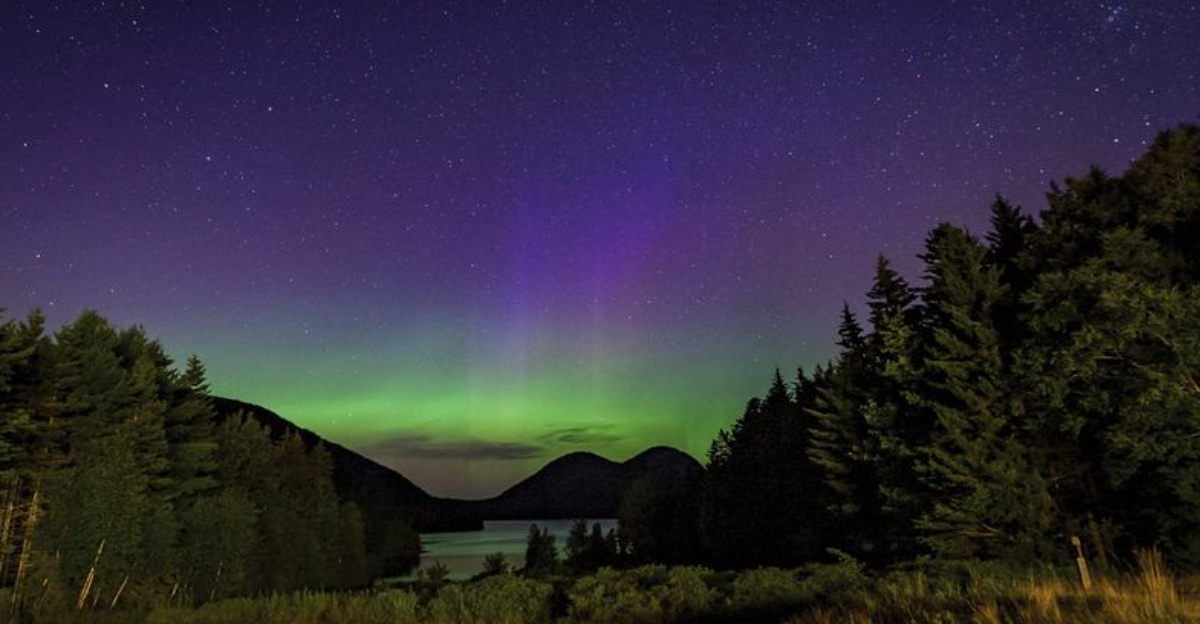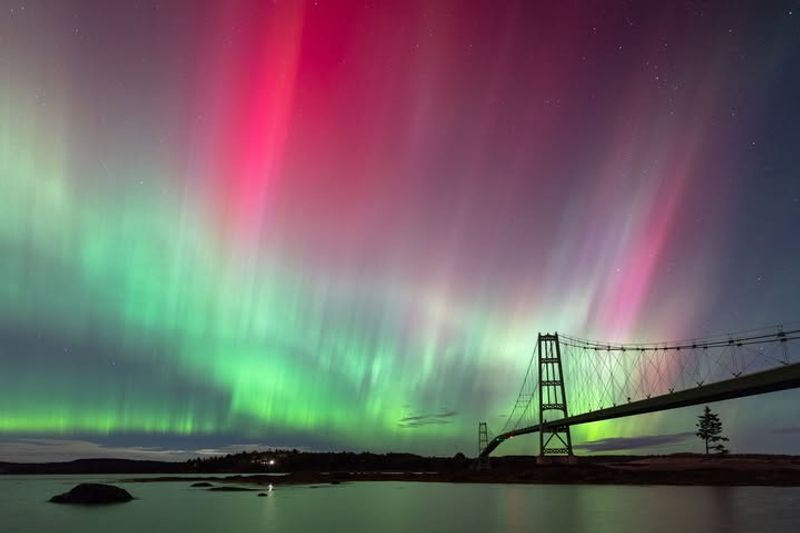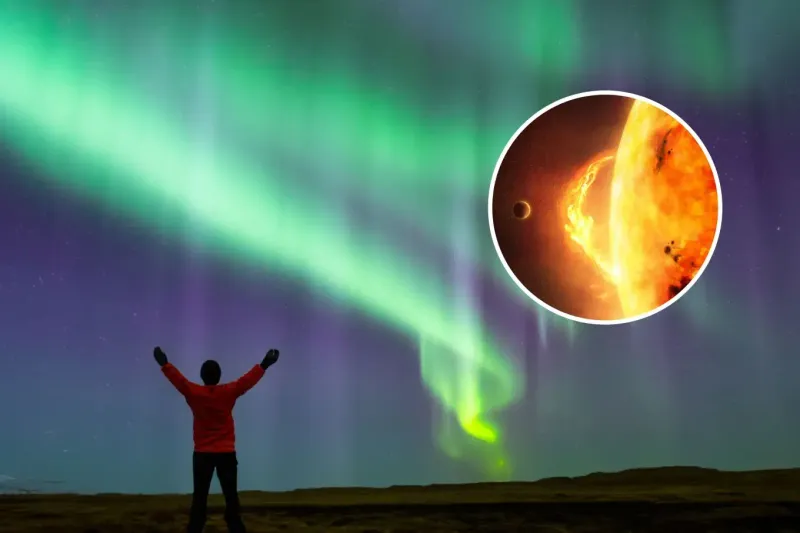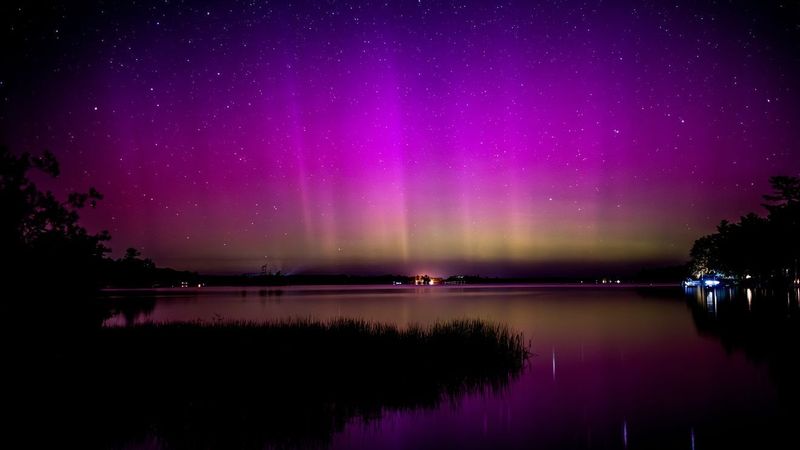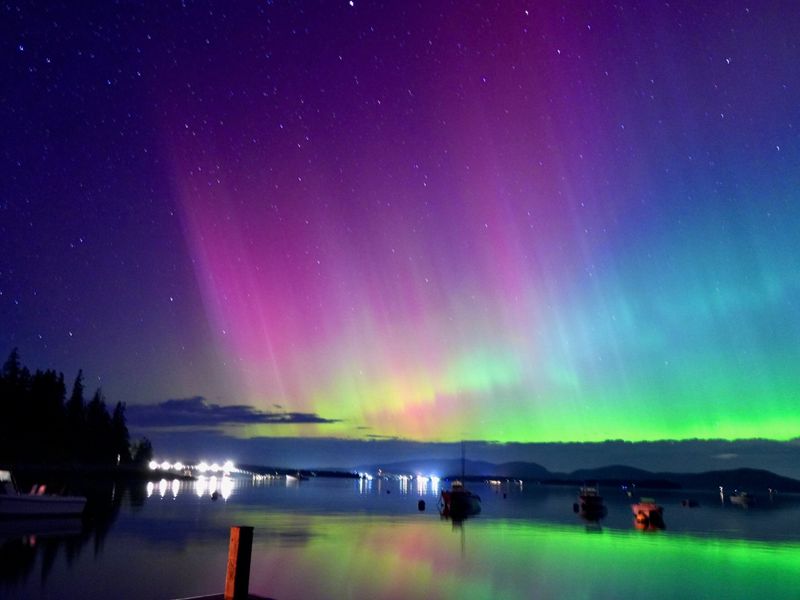Something magical is about to happen in the night skies over Maine. The Northern Lights, nature’s most spectacular light show, might soon paint the darkness with vibrant colors. This rare celestial event happens when energetic particles from the sun collide with gases in Earth’s atmosphere, creating a dance of colorful lights that has captivated humans for centuries.
A Rare Sky Event
The Northern Lights are making a special appearance in Maine! These colorful atmospheric displays usually stay closer to the Arctic Circle, making their visits to Maine uncommon and extraordinary. When charged particles from solar eruptions collide with gases in our atmosphere, they create those distinctive green, purple, and sometimes red curtains of light. The scientific name, aurora borealis, comes from Aurora (Roman goddess of dawn) and Boreas (Greek for northern wind). For Mainers, this weekend offers a rare opportunity to witness this phenomenon without traveling to places like Alaska or Iceland. The anticipated display could be among the most vivid seen in the state in years.
Why Now?
Perfect timing explains this extraordinary aurora opportunity. The sun has reached the peak of its 11-year solar cycle, dramatically increasing the frequency and intensity of solar flares and coronal mass ejections. These massive eruptions of solar material hurtle through space at millions of miles per hour before interacting with Earth’s magnetic field. September’s fall equinox also plays a crucial role through something scientists call the Russell-McPherron Effect. This seasonal phenomenon enhances Earth’s geomagnetic response to solar activity, creating ideal conditions for aurora formation. The combination of these factors makes this weekend’s potential display particularly powerful and visible much farther south than usual.
Maine’s Advantage
Maine possesses natural gifts that make it one of the best aurora-viewing states in the continental US. Its northerly position brings it closer to the auroral oval—the zone where these displays are most frequently visible. The state’s abundance of wilderness areas and low population density means minimal light pollution in many regions. Aroostook County offers some of the darkest skies, while Katahdin Woods and Waters National Monument was designated as an International Dark Sky Sanctuary in 2020. Even coastal locations like Acadia National Park provide excellent vantage points, especially from elevated areas like Cadillac Mountain. Maine’s combination of accessibility and pristine night skies creates perfect conditions for aurora hunters.
When to Look Up
Mark your calendars for prime aurora viewing this weekend! Saturday and Sunday nights show the greatest potential, with the peak viewing window between 10 p.m. and 2 a.m. when the sky reaches maximum darkness. The unpredictable nature of auroras means the show could begin earlier or last longer than expected. Dedicated skywatchers often start their vigil at dusk and maintain it throughout the night. Weather conditions will significantly impact visibility—even a thin layer of clouds can obscure the spectacle completely. Forecasts currently suggest Saturday night may offer the clearest skies across most of Maine, though conditions can change rapidly. Local meteorological reports should be consulted regularly as the weekend approaches.
Tips for Spotting the Lights
Success in aurora hunting requires preparation and the right tools. Download aurora forecast apps like “My Aurora Forecast” or “Aurora Alert” that monitor the Kp index—when it reaches 5 or higher, chances improve dramatically for Maine viewers. Find a location with an unobstructed view of the northern horizon, away from city lights. Your eyes need at least 20-30 minutes to fully adapt to darkness, so avoid looking at phone screens or using flashlights with white light (red light preserves night vision). Photography enthusiasts should bring cameras capable of manual settings, sturdy tripods, and wide-angle lenses. Set your camera to high ISO (800-3200), wide aperture (f/2.8-4), and long exposure (15-30 seconds) to capture what your eyes might miss.
A Sky Show to Remember
This weekend’s potential aurora display represents more than just a scientific phenomenon—it’s a profound connection to something ancient and awe-inspiring. Throughout history, different cultures have interpreted these lights as everything from dancing spirits to powerful omens. For photographers and nature enthusiasts, capturing or simply witnessing the aurora can be a transformative experience. Social media groups dedicated to Maine aurora sightings are already buzzing with excitement and planning viewing parties across the state. Whether you’re watching from a remote mountain trail, a quiet beach, or even your own backyard, this celestial spectacle offers a rare moment to appreciate our planet’s place in the cosmos. The memories created under these dancing lights often last a lifetime.
